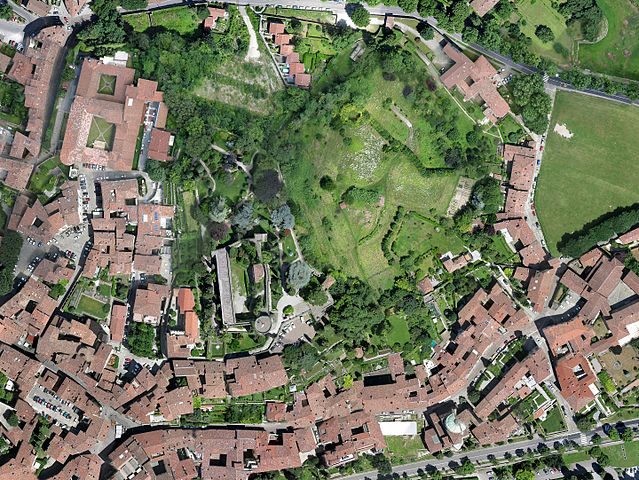
Since the enactment of Part 107 at the end of August, the FAA says that there have been nearly 23,000 drone operators licensed. While the need for drone services is increasing all the time, as the number of commercial operators increases some are finding it difficult to break into the commercial market. One way to differentiate yourself as a commercial operator is to focus in on specific tools and skills. Here are five skills that commercial drone operators should consider adding to their toolbox to get more jobs:
#1. Editing. A very large proportion of the commercial jobs available are focused on good old photography or videography, taken from the unique birds’ eye view that a drone provides. Jobs in real estate, marketing, advertising, and events are all based around photography or videography. Even some of the more basic applications for construction are all about delivering images that monitor progress and give an overview of the process. But customers are looking for a quality, polished result – not just raw footage. Drone operators hoping to get more jobs in these areas need to hone their editing skills and be able to deliver a final product similar to what a client would expect from a traditional professional photography or videography service.
#2. Photogrammetry. Drone operators who are interested in more industrial or environmental applications should look into getting some training on photogrammetry: the science of taking precise measurements from images. The end product of photogrammetry can be a measurement, map, drawing, or a 3D model of an object or scene: many of the maps we use today were created with photogrammetric data taken from aircraft. While photogrammetry and geospatial data use isn’t new, the use of drones has made it far more affordable and widely applicable. Drone photogrammetry is used in commercial applications as varied as monitoring the health of whales in the wild to the planning of roads and other infrastructure projects. Want to know more? Check out this article on drone education: Penn State World Campus offers a whole continuing education curriculum on the subject.
#3. Thermography. Thermographic cameras are another tool that’s been around for a while – but when combined with the capability of drones, they offer tools for a wide range of industrial uses. The technology is used sectors like agriculture, construction, and inspections. Think roofing: instead of inspecting a large roof surface inch by inch, a thermographic image can identify a potential leak or weakness with pinpoint accuracy in a fraction of the time.Even more broadly, since some thermographic cameras allow an operator to have night vision, their use is incredibly valuable for surveillance and search and rescue operations.
Adding a thermographic camera to your tool set will increase the range of services that you can provide. Check out this article about FLIR systems – one of the top manufacturers of thermographic cameras -to learn more about the technology’s application.
#4. LIDAR. LIDAR sensors can be purchased for commercial drones, and their uses are many. LIDAR stands for light detection and ranging, and is used to measure distances from the sensor to the object by calculating the time between the release of laser pulse to time the reflected pulse is received. LIDAR is so precise that the technology is used heavily to create exact elevation maps. These elevation maps are used in precision agriculture, coastline management, forestry, and other applications. In addition, LIDAR technology can be used to detect pollutant particles in the air for environmental monitoring. Differential Absorption LIDAR (DIAL) can even detect trace amounts of gases, making it critical for oil and gas exploration. See this list of 50 applications and uses for LIDAR technology – all of which will provide your drone business with some unique and marketable skills.
#5. Marketing. Finally, if you really want to stand out from the crowd as a commercial drone operator, you’ll have to get good at marketing your services. There’s no way around it, you have to make your business easy to find and effectively describe the skills and tools that you have to offer. Sites like JobForDrones can help you to be found by customers looking for a drone operator; but you have to be clear about why your services are unique. A basic website is a must: be sure to make it obvious that you are licensed and insured, and list the industries and applications that you service. Drone operators may also want to partner with a data platform like DroneDeploy to take their raw footage and transform it into usable information for the client: you can list your services on their site to become more visible to customers.
The market for commercial drones is getting bigger all the time. Drones offer huge benefits for industries from agriculture to security. But industry can move slowly; and while licensed operators wait for regulations and exposure to make drone use even more commonplace, it’s up to them to hone their skills and widen their repertoire to establish themselves in their market.
Miriam McNabb is the Editor-in-Chief of DRONELIFE and CEO of JobForDrones, a professional drone services marketplace, and a fascinated observer of the emerging drone industry and the regulatory environment for drones. Miriam has penned over 3,000 articles focused on the commercial drone space and is an international speaker and recognized figure in the industry. Miriam has a degree from the University of Chicago and over 20 years of experience in high tech sales and marketing for new technologies.
For drone industry consulting or writing, Email Miriam.
TWITTER:@spaldingbarker
Subscribe to DroneLife here.